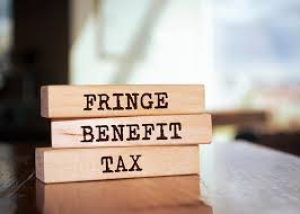Start Organising Your Records!
The 2024 Fringe Benefits Tax (FBT) year ends on 31 March 2024. (Really?) Yes! The FBT year runs from April to March (unlike the Australian financial year which runs from July to June). It can be confusing at times…
What is FBT?
FBT is a tax imposed on employers providing certain fringe benefits to their employees, including the family and associates. The most common fringe benefits provided are the use of cars or utes and entertainment. The ATO has become more proactive in relation to FBT and as such you need to keep appropriate paperwork to be FBT compliant.
Car Fringe Benefits
An employer may be providing a car fringe benefit if a car (owned by the employer) is made available or leased to an employee for their private use. In this case, the car is deemed available for private use if it is garaged at or near the employee’s home and is used for travel between work and home.
What you need to do if you have Car Fringe Benefits?
If your business-owned vehicles are provided to either you or your employees, you need to ensure that the odometer reading is taken on 31 March 2024 and have the driver sign the declaration. There should be separate declaration for each vehicle owned, including those sold during the FBT year.
What about Electric Vehicles – EVs?
The Government has recently announced the removal of FBT on eligible electric cars that are first held and used from 1 July 2022. Unfortunately, EVs provided to employees before 1 July 2022 will not quality for this exemption.
What are the criteria for FBT Exemption – EVs?
The following needs to be met for your EV to be FBT exempt:
- the car is a zero or low emissions vehicle
- the first time the car is both held and used is on or after 1 July 2022
- the car is used by a current employee or their associates (such as family members)
- luxury car tax (LCT) has never been payable on importation or sale – The LCT threshold for fuel-
efficient vehicles is $89,332 for 2023-2024 financial year.
It is also important to note associated car expenses (registration, insurance, repairs and maintenance and the electricity costs to charge EVs) are also FBT exempt.
New Guidelines
For FBT purposes, the ATO released a new guideline providing a Short-Cut Method to help work out the electricity costs of charging EVs at your employee’s home. This method allows the home charging rate of 4.2 cents/kilometre – this is best if you can’t segregate home charging station’s electricity costs from the household consumption.
Record Keeping
For both FBT and income tax substantiation needs, adequate records must be maintained and kept for 5 years from the date of lodgement with the ATO. This include:
- A valid logbook – for the FBT Operating Cost Method or Logbook Method for income tax purposes
- An electricity bill of residential premises and odometer records at the start for each FBT year or
income tax year – for Short Cut Method of 4.2 cents/km travelled
Don’t worry! If you didn’t keep odometer records, the ATO will allow a reasonable estimate based on service records or other relevant information.
Due Dates
21 May 2024 – if you prepare yourself or if tax agent lodges via paper
25 June 2024 – if tax agent lodges electronically
Appointment of tax agent date – if taxpayer register with tax agent before 21 May 2024 to receive lodgement and payment concessions for FBT returns
Author
May Aung

